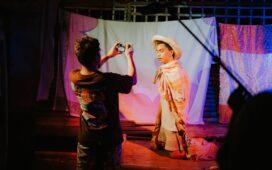Event photography is all about capturing the energy, emotion, and key moments that make an occasion special. Whether it’s a wedding, a corporate event, a concert, or a family gathering, the challenge lies in being able to tell the story of the event through your lens. The best event photographers are those who can anticipate moments, blend into the background, and capture candid shots that encapsulate the spirit of the occasion.
In this article, we’ll explore tips and techniques that will help you excel in event photography, ensuring you capture unforgettable moments that your clients will cherish for years to come.
Know the Event and Plan Ahead
Preparation is the key to successful event photography. Before the event, take the time to understand the schedule, key moments, and the client’s expectations. This includes knowing the timing of speeches, performances, or any special activities that need to be captured.
If possible, visit the venue beforehand to scout out the best spots for shooting. Consider factors like lighting, backgrounds, and the flow of people. Knowing the layout of the venue can help you position yourself in the right place at the right time.
Be Discreet and Blend In
One of the most important aspects of event photography is the ability to blend in with the crowd. Your goal is to capture candid, natural moments, and this is best achieved when people are unaware of the camera. Dress appropriately for the event, whether it’s formal attire for a wedding or business casual for a corporate event, so you don’t stand out.
Move quietly and avoid drawing attention to yourself. Use a telephoto lens to capture close-up shots from a distance, allowing you to get intimate photos without invading personal space. The more you can blend in, the more authentic and relaxed your images will be.
Capture Candid Moments
Candid shots are often the most memorable because they capture people in their most natural and genuine states. Keep an eye out for laughter, tears, hugs, and other expressions of emotion. These moments often happen quickly, so being ready with your camera at all times is crucial.
In addition to focusing on the main events, such as speeches or performances, look for small interactions between guests—these can be just as powerful in telling the story of the event. For instance, a child playing in the corner or a couple sharing a quiet moment can add depth and emotion to your photo collection.
Master the Art of Timing
Timing is everything in event photography. Knowing when to press the shutter can make the difference between a good shot and a great one. Anticipate key moments and be ready to capture them. For example, during a wedding, be prepared for the first kiss, the exchange of rings, or the bride’s reaction when she sees her partner at the end of the aisle.
To master timing, practice reading people’s body language and facial expressions. This will help you predict when something significant is about to happen, allowing you to capture the perfect moment.
Use Natural Light Whenever Possible
Lighting can be tricky in event photography, especially in dimly lit venues. While using flash is sometimes necessary, natural light is often more flattering and can create a warmer, more authentic atmosphere in your photos.
Position yourself near windows or other sources of natural light whenever possible. If you must use flash, consider bouncing it off a wall or ceiling to soften the light and avoid harsh shadows. Reflectors can also be useful tools for directing light where you need it.
Capture the Details
While the people and key moments are the heart of event photography, don’t forget to capture the details that make the event unique. This includes decorations, table settings, food, signage, and any other elements that contribute to the atmosphere.
These shots not only add variety to your portfolio but also help to tell the full story of the event. For example, close-ups of the wedding cake, the bride’s bouquet, or the décor at a corporate gala can provide context and enhance the overall narrative.
Engage with the Guests
While it’s important to be discreet, there are times when engaging with the guests can lead to great photo opportunities. For example, at a wedding, you might ask the bridal party to strike a fun pose, or at a corporate event, you could encourage attendees to smile for a group shot.
Creating a rapport with the guests can help them feel more comfortable in front of the camera, resulting in more natural and joyful expressions. Just be sure to balance this with your candid shots to capture a wide range of emotions and interactions.
Be Prepared for the Unexpected
Events rarely go exactly as planned, so being adaptable and ready for the unexpected is crucial. Whether it’s a surprise performance, an impromptu speech, or a sudden change in weather, you need to be able to adjust quickly to capture whatever unfolds.
Having backup equipment, such as extra batteries and memory cards, is essential. You never know when you might need to switch cameras or lenses on the fly to adapt to changing conditions.
Incorporate Photo Booth Fun
A photo booth is a popular feature at many events, providing guests with a fun and interactive way to capture memories. Buy a roaming photo booth as the event photographer; consider how you can incorporate the photo booth into your coverage. This could involve taking candid shots of guests enjoying the booth or capturing the group photos taken within it.
The photo booth often brings out playful and lighthearted moments that can add a fun element to your event photography portfolio. You might also capture the reactions of guests as they review their photo booth strips, showcasing their joy and laughter.
Edit with a Story in Mind
Post-processing is the final step in creating unforgettable event photos. When editing, think about how each image contributes to the overall story of the event. Start by culling through your photos to select the best moments, then use editing tools to enhance colors, adjust exposure, and crop as needed.
Consistency in editing style is important, especially if you’re delivering a full album to a client. Whether you prefer a bright and airy look or something more moody and dramatic, ensure that your edits align with the tone of the event.
Consider creating a highlight reel or a series of images that showcase the key moments of the event, from the setup to the final farewell. This can provide your clients with a cohesive narrative that beautifully encapsulates their special occasion.





